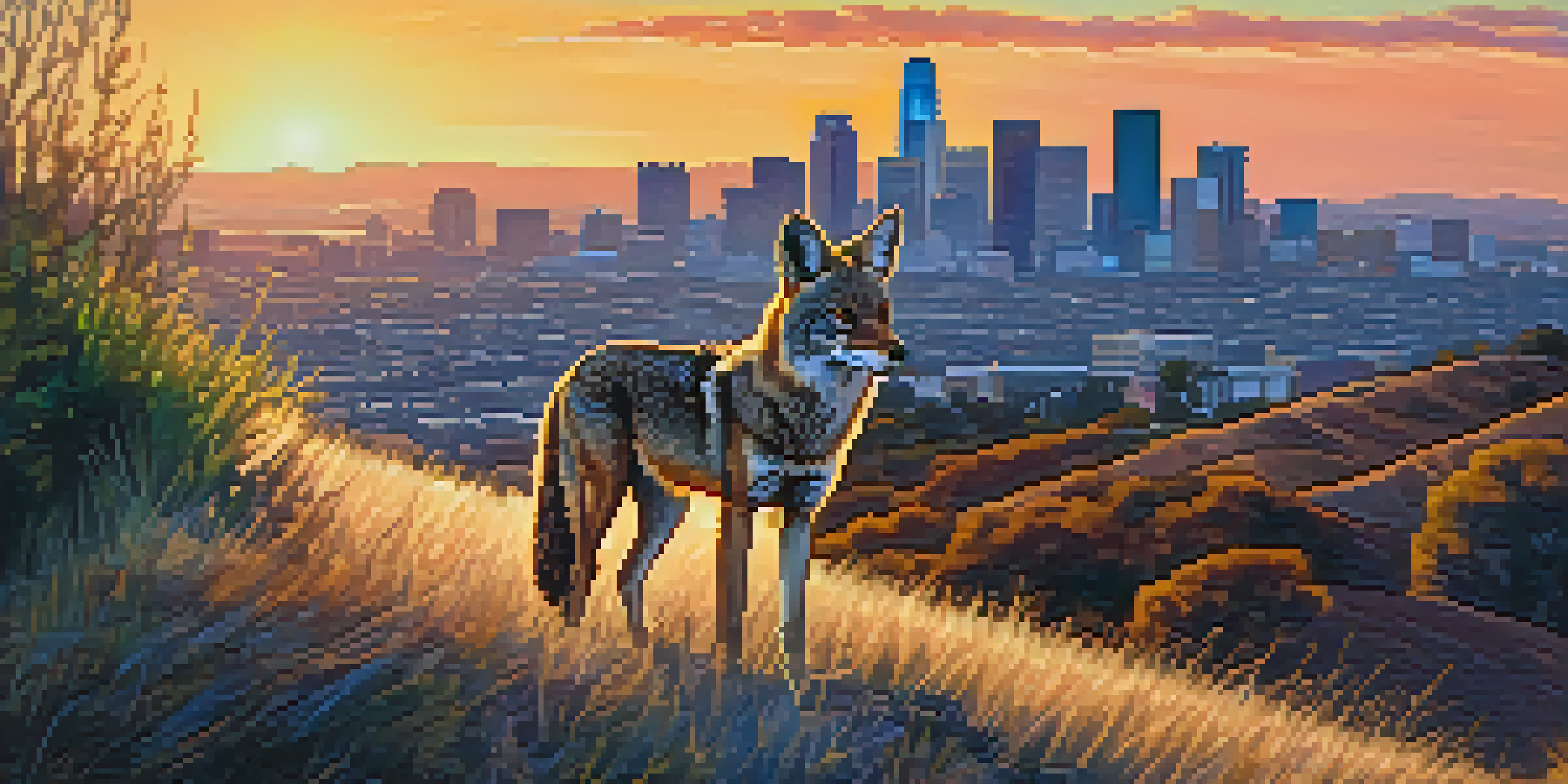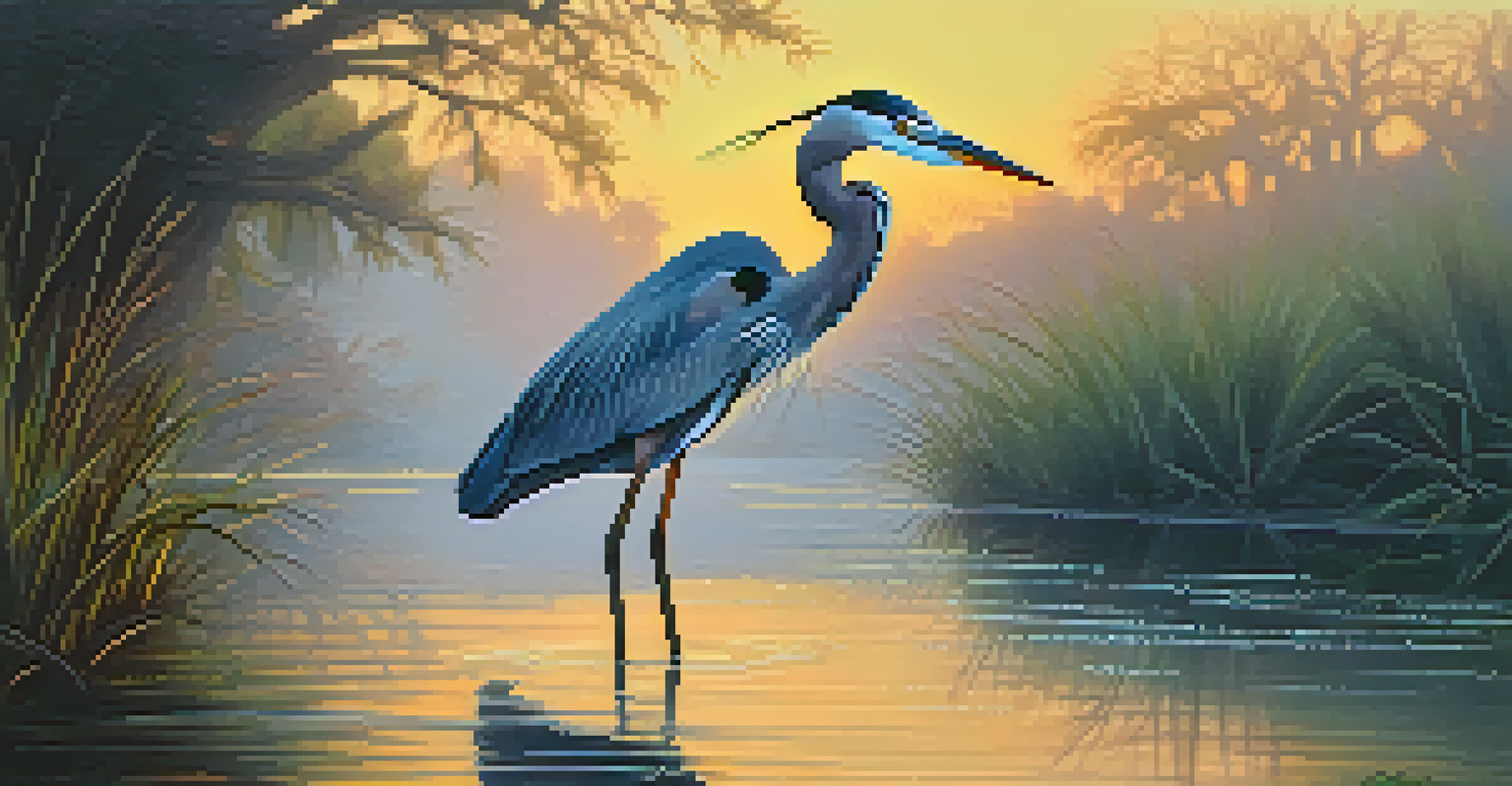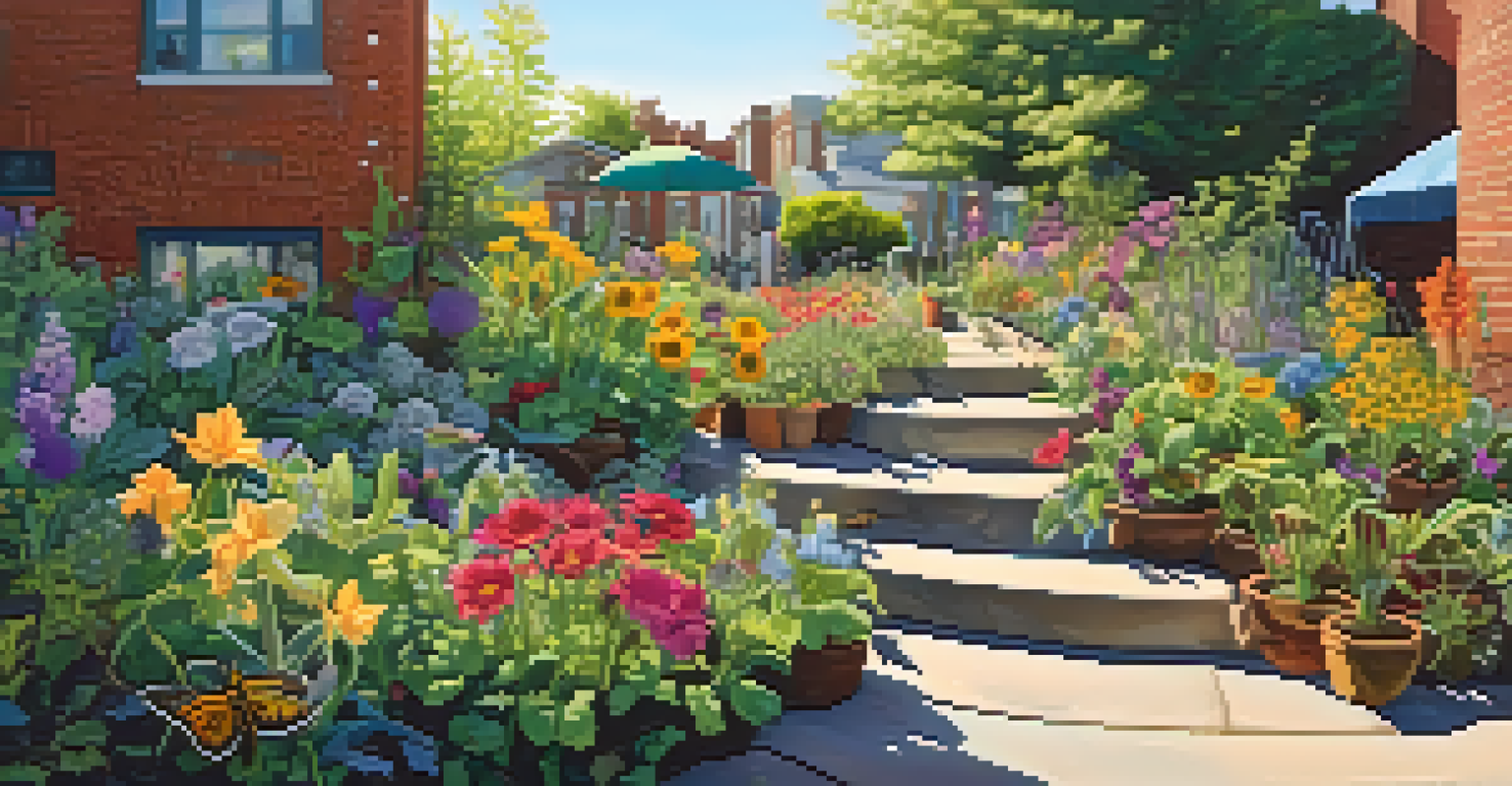Urban Wildlife Photography: Capturing LA's Hidden Creatures

Understanding Urban Wildlife in Los Angeles
Los Angeles is often celebrated for its bustling city life, but what many don't realize is that it's also a thriving habitat for diverse wildlife. From coyotes roaming through parks to hawks soaring over skyscrapers, urban wildlife is all around us, often hiding in plain sight. These creatures have adapted to the urban environment, showcasing resilience and flexibility that can inspire photographers.
In every walk with nature one receives far more than he seeks.
Taking the time to observe these animals reveals a fascinating side of LA that contrasts sharply with its glamorous image. This juxtaposition offers unique photographic opportunities—think of a coyote framed against the backdrop of a glittering cityscape. Understanding their behaviors and habitats can greatly enhance your ability to capture compelling images.
By learning about the various species that call the city home, you can better plan your photography outings. Whether you’re interested in birds, mammals, or even reptiles, knowing where and when to look increases your chances of a successful shoot.
Essential Gear for Urban Wildlife Photography
When it comes to capturing wildlife in an urban setting, having the right gear can make all the difference. A good camera with a telephoto lens will allow you to get close-up shots without disturbing the animals. Additionally, a sturdy tripod can help stabilize your shots, especially in low-light situations, which are common in urban environments.

Consider investing in a silent shutter mode or a lens with image stabilization to minimize noise and movement. Wildlife can be timid, and sudden movements can scare them away. Also, using an appropriate backpack to carry your gear comfortably is essential, as urban adventures can involve a fair amount of walking.
Discover Wildlife in Urban LA
Los Angeles is home to diverse wildlife that offers unique photographic opportunities amidst the cityscape.
Lastly, don’t forget to pack extra batteries and memory cards. You never know when you might stumble upon an unexpected photo opportunity, and the last thing you want is to miss that perfect moment due to technical limitations.
Best Locations for Wildlife Photography in LA
Los Angeles boasts a variety of locations where urban wildlife photography can thrive. Griffith Park, for example, is not only a popular hiking spot but also home to numerous animals, including deer and foxes. The park’s diverse habitats, from dense woodlands to open fields, provide ample opportunities for capturing wildlife in action.
The Earth has music for those who listen.
The LA River is another hotspot, where you can photograph birds like herons and kingfishers. The river's ecosystem is a surprising haven for wildlife, showcasing the resilience of nature amidst the urban sprawl. Exploring the riverbanks during dawn or dusk can yield stunning results, as the soft light enhances the beauty of your subjects.
Don’t overlook smaller urban spaces, like community gardens or parklets. These often overlooked areas can harbor a wealth of flora and fauna, making them perfect for intimate wildlife photography. By venturing into hidden corners of the city, you might just discover a unique perspective on urban wildlife.
Timing Your Photography for Maximum Impact
Timing plays a crucial role in wildlife photography, especially in urban settings where light and activity levels fluctuate. Early mornings or late afternoons are often the best times to capture wildlife, as animals are more active during these cooler hours. The golden hour light can add a warm glow to your photos, enhancing their appeal.
In addition to lighting, consider the seasonal aspects of wildlife behavior. Certain species may be more visible during specific times of the year, such as migratory birds in spring or urban coyotes in winter. Researching these patterns can help you plan your outings more effectively.
Essential Gear for Wildlife Photos
Having the right photography gear, such as a telephoto lens and sturdy tripod, is crucial for capturing urban wildlife effectively.
Be patient and prepare to wait quietly for the right moment. Wildlife can be unpredictable, and sometimes the best shots come after long periods of observation. This patience not only improves your photography but also deepens your appreciation for the creatures you are capturing.
Techniques for Capturing Urban Wildlife
To effectively capture urban wildlife, you may want to employ specific techniques that enhance your images. One popular method is to use a shallow depth of field, which blurs the background and brings your subject into sharper focus. This technique can highlight the unique features of the animals and create a more dramatic effect.
Another effective approach is to practice patience and observation. Spend time watching the behavior of your subjects rather than just snapping photos. Understanding their movements and habits can lead to more dynamic shots, such as capturing a bird in mid-flight or a fox in pursuit of its prey.
Lastly, consider using natural light creatively. Backlighting can create stunning silhouettes, while side lighting can add depth and dimension to your images. Experimenting with different angles and perspectives can yield unique results that showcase the beauty of urban wildlife.
Post-Processing Tips for Urban Wildlife Photos
Once you've captured your stunning wildlife images, the next step is post-processing. Software like Adobe Lightroom or Photoshop can help enhance your photos, allowing you to adjust exposure, contrast, and color balance. A little editing can go a long way in making your urban wildlife shots pop.
Consider cropping your images to emphasize your subject better. This can help eliminate distractions and focus the viewer's attention on the wildlife. Additionally, sharpening your images can bring out finer details, such as the texture of feathers or fur, making your photographs more engaging.
Timing and Techniques Matter
Utilizing the right timing and photography techniques can significantly enhance your ability to capture stunning images of urban wildlife.
However, it’s essential to maintain authenticity in your editing. While enhancements can elevate your images, be cautious not to overdo it. Aim for a balance that preserves the real-life beauty of the wildlife you’ve photographed.
Sharing Your Urban Wildlife Photography
After putting in all the hard work, it’s time to share your urban wildlife photography with the world! Social media platforms like Instagram and Flickr provide excellent avenues for showcasing your images and connecting with fellow photographers. Using relevant hashtags can help your work reach a broader audience interested in wildlife and photography.
Consider creating a dedicated portfolio or blog where you can display your best work and share stories behind the images. This not only allows you to connect with others but also helps you document your growth as a photographer. Engaging with your audience can lead to valuable feedback and inspiration.

Don’t forget to enter photography contests or submit your work to magazines that focus on wildlife or urban life. Such opportunities can not only help you gain recognition but also provide motivation to continue honing your craft.